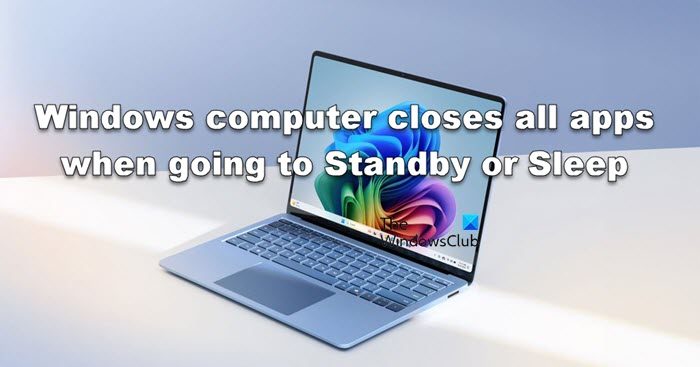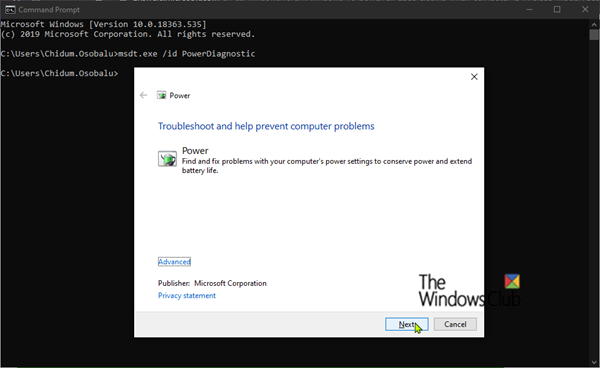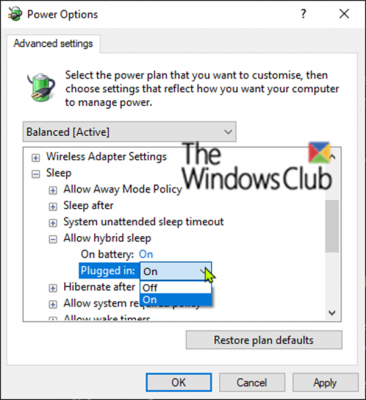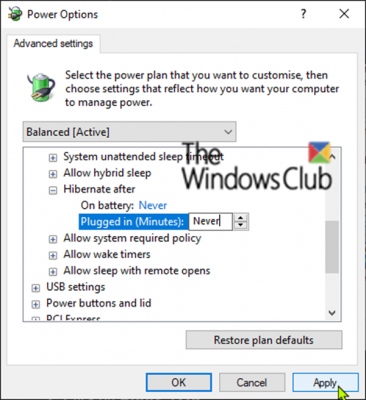You may have noticed that sometimes, your Windows computer closes all apps when going to standby or sleep which is not the expected conduct. So, in this post, we will discuss how you can resolve this issue.

Why do all my apps close when my computer goes to sleep?
Ideally, your computer should not close any app when it goes to sleep. However, if the power settings are misconfigured or some files are corrupted, you will experience this issue. To resolve it, you can go through the solutions mentioned in this post.
Windows 11 closes all apps when going to Sleep
Your Windows 11/10 computer might close all apps when going to sleep or stand by if there is some issue with the power configuration. Also, we can expect this uncanny behavior if the system files are corrupted. To resolve it, follow the solutions mentioned below.
- Run Power Troubleshooter
- Run SFC and DISM
- Disable Hybrid Sleep
Let us talk about them in detail.
1] Run Power Troubleshooter

To resolve this issue – first, try to run the Power Troubleshooter.
Power Troubleshooter will automatically fix some common issues with Power Plans. Run the Power troubleshooter to adjust your computer’s power settings. The Power troubleshooter checks things like your computer’s timeout settings, which determine how long the computer waits before turning off the monitor display or entering sleep mode. Adjusting these settings can help you conserve power and extend your computer’s battery life.
Here’s how:
- Click Start and type Troubleshooting.
- Select Troubleshooting settings from the result.
- Scroll down and click on Power. Then follow the onscreen steps.
Alternatively, you can invoke the Power troubleshooter by opening the command prompt, then type the command below and hit Enter.
msdt.exe /id PowerDiagnostic
Click Next and follow the onscreen steps.
2] Run SFC and DISM
If the Power troubleshooter didn’t resolve the issue, you can perform SFC/DISM scan. Here’s how:
Open Notepad – copy and paste the command below into the text editor.
@echo off date /t & time /t echo Dism /Online /Cleanup-Image /StartComponentCleanup Dism /Online /Cleanup-Image /StartComponentCleanup echo ... date /t & time /t echo Dism /Online /Cleanup-Image /RestoreHealth Dism /Online /Cleanup-Image /RestoreHealth echo ... date /t & time /t echo SFC /scannow SFC /scannow date /t & time /t pause
Save the file with a name and append the .bat file extension – eg; SFC_DISM_scan.bat
Repeatedly run the batch file with admin privilege (right-click the saved file and select Run as Administrator from the context menu) until it reports no errors – at which point you can now restart your PC and see if the issue has been resolved.
3] Disable Hybrid Sleep
If the issue still persists, it’s likely Hybrid Sleep mode has been disabled. Turning the mode back on should resolve the issue. Here’s how:

- Press the Windows key + R. In the Run dialog box, type control – hit Enter.
- Click on Hardware and Sound.
- Select Power Options.
- Depending on your PC’s current power plan, click on Change plan settings.
- Choose Change advanced power settings.
- Now, click the + sign against Sleep, to collapse the section.
- Click on Allow hybrid sleep and then set it to On for both On battery and Plugged in options.
- Next, go to Hibernate after and then set it to Never for both On battery and Plugged in options.
- Click Apply > OK.

Once done, you can check and see if the issue has been resolved.
If however, the issue persists – you’ll need to identify the recent update(s) installed on your PC and uninstall the update(s).
Hope this helps!
Leave a Reply